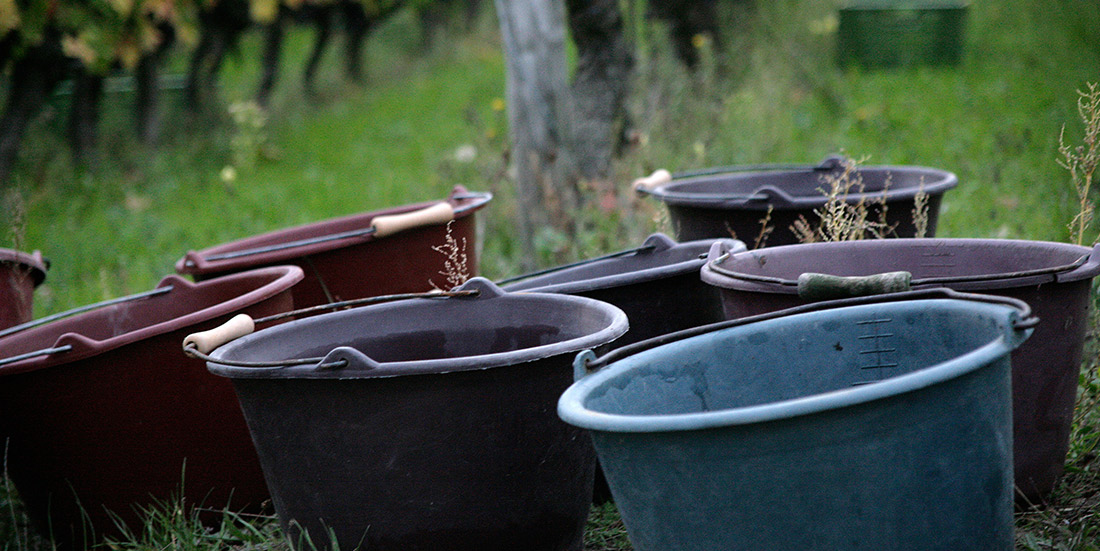Harvest
The harvest is the first step of the vinification process: the selection of grapes is fundamental to the quality of the resulting wine, which means harvesting when the grapes reach just the right level of maturity. Determining this moment is individual to each winemaker: only they can decide the right time to start harvesting, making sure the grapes are neither under nor over ripe.
The weeks before harvesting, we keep a close eye on the fruit and taste regularly, deciding on the order of harvest accordingly.
The selection at harvesting must be painstakingly done. We discard unripe grapes as well as those whose condition isn’t impeccable. The healthy, ripe grapes are harvested in small 20kg crates to avoid crushing and to keep them intact until they are brought to the cellar.

Filling vats (Encuvage)
Once in the cellar, grapes are sorted through again, if necessary. The vats, which are made of concrete or fibreglass, are filled with grapes sorted by plot.
The white grapes are pressed directly after harvest. The extracted juice is then transferred into vats and racked off the lees within 48 hours. This process, known as “debourbage”, consists of separating the clear juice from the sediments which collect at the bottom of the vat. This juice is then transferred to another vat where the alcoholic fermentation starts.
Red grapes are either destemmed, mechanically, as delicately as possible before being placed into the vat, or put in in whole bunches, according to the type of maceration chosen.

Macération
We use two types of maceration: pellicular and carbonic.
Pellicular maceration
Pellicular maceration consists of submerging the grapes in their own juice in order to extract properties such as colour, tannins and aromas. In our region, we usually destem the grapes for this process which is also known as “traditional” maceration. In general, we tend towards a gentle extraction, adjusting the intensity according to the quality of the grapes. –
Carbonic maceration
Carbonic maceration consists of macerating whole bunches in vats filled with carbon dioxide. Here, the extraction takes place inside the grape, due to an enzyme reaction, and is focussed on the aromas. We use this technique for Greta Carbo but also for other cuvees, either total or partial, depending on the vintage.
Fermentation
Wine is the product of the transformation of sugar from grapes into alcohol when introduced to yeasts. We only use indigenous yeasts that are naturally present on the grapes (as opposed to selected yeasts cultivated in labs). This ensures that we achieve an aromatic diversity true to our terroir and to each year, indeed, this ‘vintage effect’ is a strong characteristic of our wine. But it can also lead to variations in the length and rhythm of the alcoholic fermentation depending on vintage and cuvee. Fermentation starts a few days after the vats have been filled and will often last into the wine’s aging process for the slowest cuves.
One other type of fermentation happens in the winemaking process: malolactic fermentation.
This is the transformation of malic acid into lactic acid under the action of bacteria. It acts to reduce the acid content of the wine, as lactic has less acidity than malic acid.
We try to reach a malolactic fermentation with all our wines as we consider that the presence of malic acid upsets the balance of the wine.
Aging (Elevage)
Each cuvée either comes directly from its own small plot or is blended between plots. All of the wines are aged in old barrels except Piak! which stays in a vat. The length of aging varies according to the wine itself and can last from 3 months for our primeur Piak! to a year for Echalier. We follow the journey of our wines very closely, carrying out a single racking, if needed.

